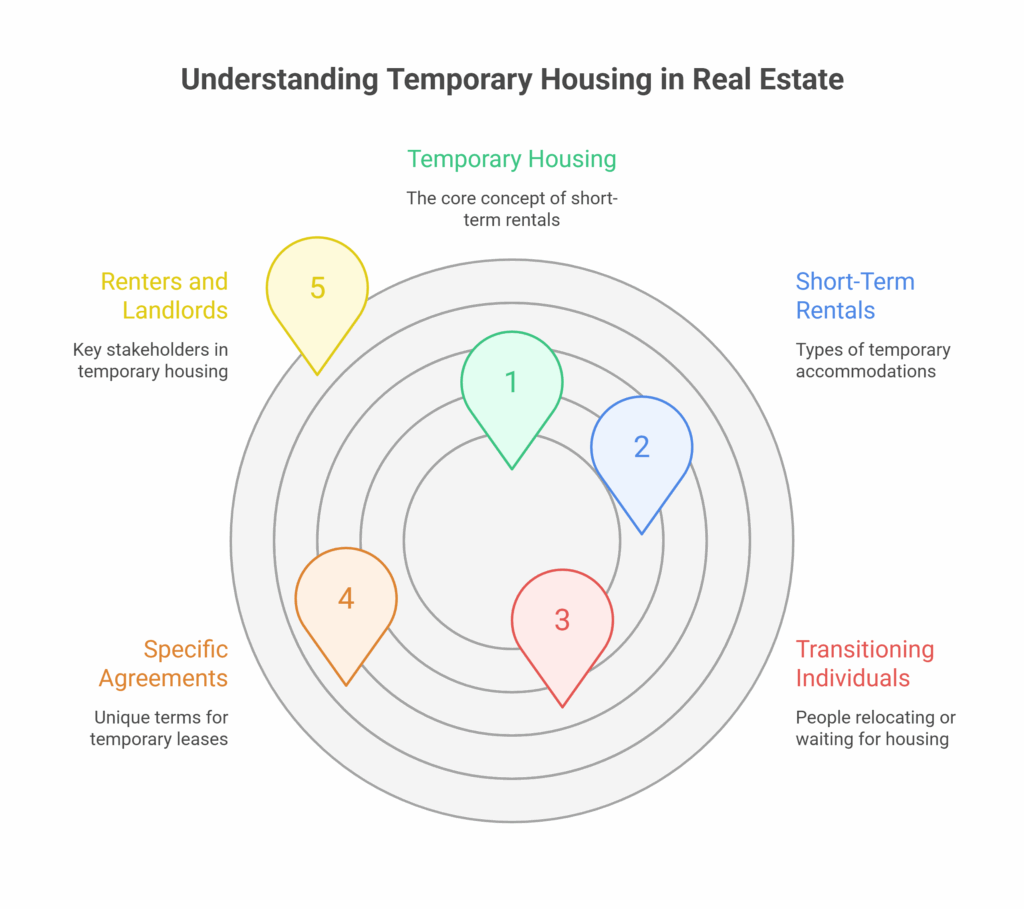Quick Answer: What Does Temp Mean in Real Estate?
“What Does Temp Mean in Real Estate?” is a common question for buyers and sellers who see the term on listings or contracts. In real estate, “Temp” usually refers to a temporary status on a property. This often means the listing is temporarily off the market—perhaps the seller is making repairs, reviewing offers, or dealing with paperwork, but hasn’t officially withdrawn the home. It’s different from “sold” or “pending” because the property may still return to active status. Think of it as a short pause button rather than a permanent stop.
So, if you’re wondering, “What Does Temp Mean in Real Estate?”—it’s simply a temporary condition that signals the property isn’t currently available but could be back soon.
Now let’s dive deeper.

What Does “Temp” Mean in Real Estate?
In real estate, “temp” is most commonly short for “Temporarily Off Market.” This status is used in Multiple Listing Services (MLS) to indicate that a property listing is currently unavailable for showings or offers, but the listing agreement between the seller and the agent is still active.
Essentially, a “temp” status tells other real estate professionals that the property is not being marketed at the moment, but it hasn’t been withdrawn, expired, or sold. It’s just on hold — temporarily.
Why Would a Property Go Temp?
There are a number of reasons a listing might be marked as “temp.” Some of the most common include:
- Repairs or Renovations
If a seller decides to make improvements to the home — such as fixing a leaky roof or upgrading the kitchen — they may take the property off the market temporarily to complete the work without disruption. - Personal Reasons
A family emergency, illness, or travel plans might require the seller to pause showings for a short time. Rather than withdrawing the listing entirely, the agent marks it as “temp.” - Holiday or Seasonal Breaks
Some sellers prefer not to show their home during the holiday season or in particularly slow market months, choosing instead to take a temporary break. - Staging or Professional Photography
Before relaunching the listing, some sellers pause marketing efforts to prepare the home, which could involve staging, deep cleaning, or getting new photographs taken. - Legal or Financial Issues
There could be pending legal matters, title disputes, or mortgage concerns that the seller needs to resolve before continuing to show the home.
What Does Temp Status Mean for Buyers?
For buyers, a property marked “temp” may feel like a dead end, but that’s not always the case. Here’s what you should know:
- The Home Might Come Back Soon
Since the listing hasn’t been canceled, it may return to “active” status soon. It’s a good idea to keep an eye on it or ask your agent to notify you when it goes live again. - You Can Inquire Anyway
In some cases, real estate agents may still be willing to answer questions about the home or even arrange off-market showings, depending on the seller’s wishes. - Be Prepared to Act Quickly
If you’re interested in a temp property, have your financing lined up so you’re ready to make a move as soon as it becomes active again.
What Does Temp Mean for Sellers?
From a seller’s perspective, using the “temp” status can be strategic. It allows the seller to maintain their listing agreement and MLS position without the risks associated with canceling or withdrawing a property from the market completely.
Here’s how sellers benefit:
- Preserve Days on Market (DOM)
One of the key advantages of going temp is that the “days on market” counter may pause, depending on the MLS rules in your region. This prevents the property from looking stale or overexposed when it goes back on the market. - Control Over Showings
Sellers get a break from constant showings while still remaining under contract with their agent. - Time to Reassess Strategy
During the temp period, the seller and agent can review marketing plans, pricing, or staging to increase the home’s appeal.
Can Temp Status Be a Red Flag?
Not necessarily, but buyers and investors should proceed with some caution. If a home goes temp multiple times or remains in that status for an extended period, it may be a sign of deeper issues, such as:
- Undisclosed structural problems
- Legal complications
- An indecisive seller
In these cases, it’s worth doing extra due diligence or speaking with your real estate agent about whether the listing is likely to come back on the market at all.
Final Thoughts
“Temp” in real estate isn’t something to fear — it’s simply a signal that a listing is on a short pause. For sellers, it offers flexibility and breathing room without sacrificing their agent relationship or marketing status. For buyers, it’s a chance to prepare and stay alert for when the home returns to active status.
Understanding these types of terms can make you a more informed and strategic participant in the real estate process. Whether you’re buying your first home or looking for investment opportunities, it pays to know what each listing status really means.
And if you’re actively searching for property opportunities in Texas or thinking of selling fast, consider connecting with trusted house buyers Texas. We’re here to help make your transaction smooth, straightforward, and profitable — even if the market throws you a few curveballs.
Call us anytime at 713-561-5162 or connect with us on our website and we’ll lay out all of your options for your specific situation.
